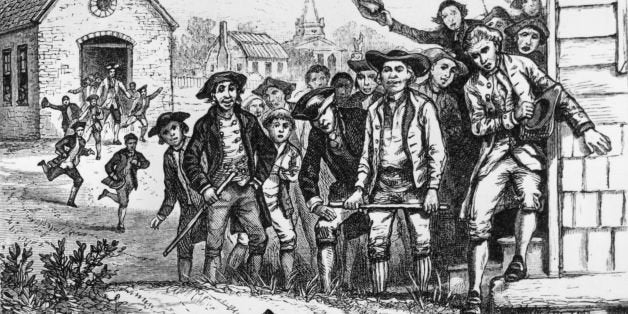
"The tree of liberty must be refreshed from time to time with the blood of patriots and tyrants." So observed a sanguine Thomas Jefferson in 1787, responding to news of violent uprising in Massachusetts.
But who ranks as a patriot? And what counts as tyranny? As it turns out, it depends on skin color. Just look in a history textbook.
If whites are involved, uprisings tend to be framed as rebellions. Flip through the index of any social studies text, and you'll find several of them: Bacon's Rebellion, Shays's Rebellion, Dorr's Rebellion. The list goes on.
When blacks are involved, however, an uprising isn't a rebellion; it's a riot. Harlem, Watts, Chicago. Or, more recently, Ferguson.
The point here is not that a riot and a rebellion are one and the same. They aren't. A rebellion is inherently meaningful. It connotes resistance to authority or control. A riot, by contrast, disturbs an otherwise peaceful society -- it is an expression of power and energy rather than of simmering resentment and honest anger. After a riot, everyone goes home and sobers up.
In spite of these seemingly clear distinctions, however, race plays a significant role in how violence is framed for the public. And though such framing may begin informally in conversation or in popular media, it persists in what our children are taught in school and affects the way we understand each other.
For those who lived through them, the so-called riots of the past half century were harrowing events. Those angry -- about their interactions with police; about their daily interactions with bigotry; about their poverty and their limited opportunities -- unleashed their disappointments and their rage. And cities exploded. To many, the violence seemed to come out of nowhere.
Yet as it so happens, the events classified as "rebellions" in schoolbooks are often eerily similar.
In Bacon's Rebellion, for instance, colonists defied Virginia governor William Berkeley and initiated a series of attacks on Native Americans, whom they blamed for many of their woes. Returning to Jamestown as criminals, the rebels laid siege to the city and eventually burned it to the ground.
Is this substantively different from any one of the urban riots of the past half century?
Despite these parallels, however, the events are presented in radically different light. Bacon's Rebellion is framed by one mainstream high school textbook as hastening "the end of an era of executive tyranny." The uprisings of the 1960s, on the other hand, garner the following two sentences in another typical text: "In the 'long hot summer' of 1964 riots erupted in African American sections of many large cities in the North. In 1965 the Watts riot in Los Angeles resulted in the death of 34 people and the destruction by fire of $35 million in property." Similar events; not so similar treatments.
Perhaps even more striking is the way that rebellions are always framed by a positive upshot -- a treatment never received by African American "riots."
In Shays's Rebellion, for instance, angry farmers and veterans organized an armed force and marched on a federal armory, seeking to overthrow the government. Yet the texts don't focus on violence. Instead, they tend to focus on the motivations of the rebels and, as in one best-seller, the "powerful effect" of the rebellion on public opinion and the framing of the Constitution. Dorr's Rebellion gets a similar treatment. Though it culminated in an attack on an arsenal, with the aim of seizing enough weapons to establish a new government, violence is never the heart of the story. According to one widely-adopted textbook, Dorr's Rebellion was ultimately a success that resulted "in an extension of the vote to all white males."
None of this justifies violence of any sort. It does, however, underscore the different ways that whites and blacks are perceived in our society. Rebels are heroes fighting tyrants, driven by purpose. Rioters, on the other hand, are villains. Their actions are irrational. Or, as Missouri Governor Jay Nixon recently described events in Ferguson, "senseless."
This is deeply problematic. Not just because it denies motive and reason to people of color. But also because it precludes us from seriously considering -- and addressing -- the root causes of such events. After all, you don't respond to the concerns of rioters; you pepper spray them.
No wonder we keep repeating this story -- each time in a new place, but always with a similar plot.
If we want to put urban unrest behind us, we need to see rebellion for what it is. We must consider the possibility that patriotism comes in all shades.